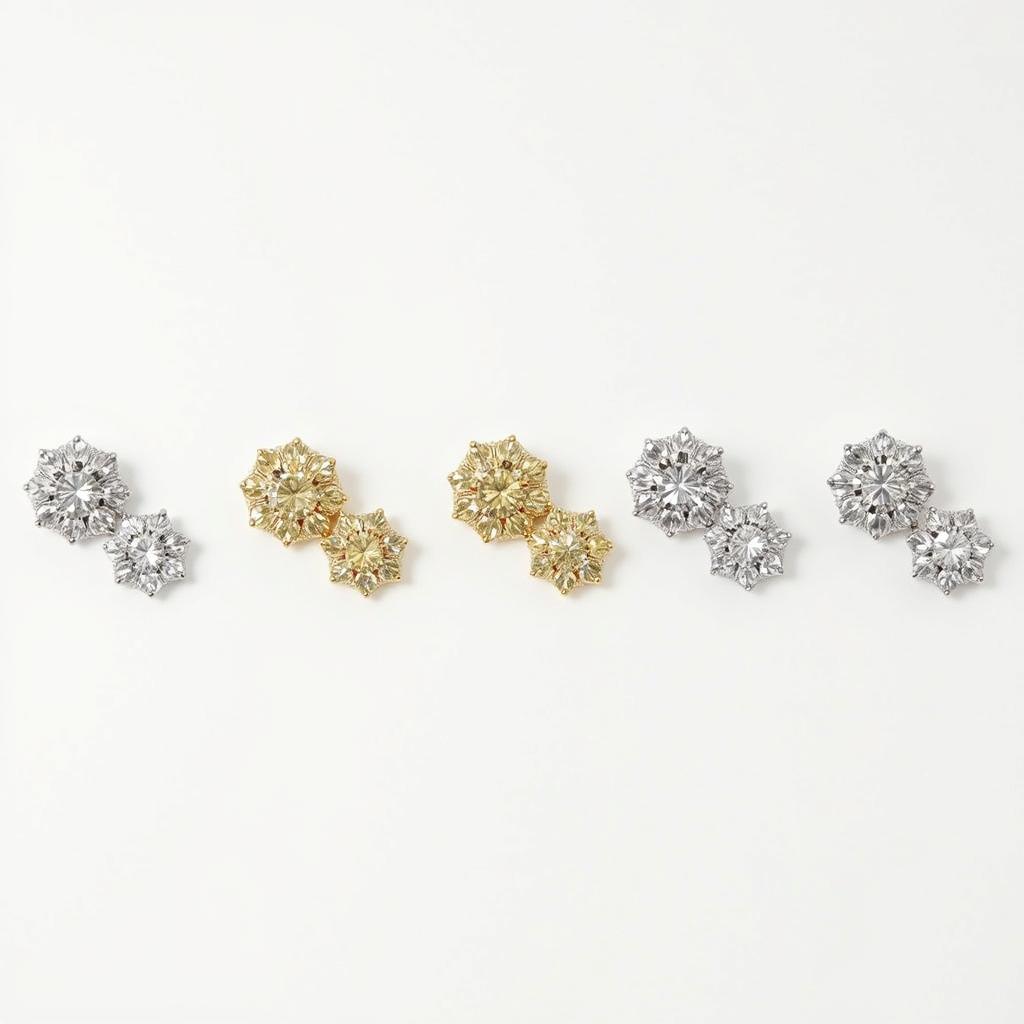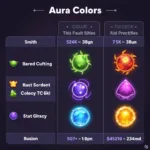When investing in a diamond, color is one of the most crucial factors to consider, as it significantly influences its brilliance and overall value. While many believe that diamonds should be completely colorless, the reality is that they naturally occur in a spectrum of hues. So, what Is A Good Color For A Diamond? The answer depends on your priorities, budget, and the diamond’s setting.
Understanding the Diamond Color Scale
Diamonds are graded on a color scale established by the Gemological Institute of America (GIA), ranging from D to Z. D represents the most colorless diamonds, while Z indicates noticeable color, usually a yellow or brown tint.
-
D-F (Colorless): These diamonds exhibit exceptional colorlessness and are exceptionally rare, commanding the highest prices.
-
G-J (Near Colorless): Diamonds in this range display very subtle hints of color that are typically undetectable to the untrained eye, especially when mounted in jewelry. They offer excellent value for their brilliance.
-
K-M (Faint): These diamonds possess a more discernible yellow or brown tint. While still beautiful, they may not possess the same sparkle and fire as higher-grade diamonds.
-
N-R (Very Light): Diamonds in this category have a noticeable warm tone that may influence the overall appearance.
-
S-Z (Light): These diamonds exhibit the most noticeable color, often appearing yellowish or brownish.
Factors Influencing Ideal Diamond Color
While the GIA color scale provides a standardized assessment, several factors can impact the perceived color of a diamond:
-
Diamond Shape: Certain shapes, such as round brilliants, tend to mask color better due to their faceting pattern, making them appear whiter than other shapes with the same color grade.
-
Carat Weight: Larger diamonds can show color more readily than smaller ones.
-
Setting Metal: The color of the metal surrounding the diamond can influence its perceived color. For instance, a yellow gold setting can make a diamond with a slight yellow tint appear whiter.
-
Lighting Conditions: Diamonds appear differently under various lighting conditions. Natural daylight often reveals the truest color.
What is a Good Color for You?
Determining the best color for your diamond ultimately boils down to your personal preferences and budget.
-
For maximum brilliance and a colorless appearance: Opt for diamonds graded D-F.
-
For exceptional value and minimal color: Diamonds in the G-J range offer a balance between colorlessness and price. Is G color diamond good? or Is J color diamond good? Learn more about these popular choices.
-
For a warmer appearance: Diamonds in the K-M range, while possessing a warmer hue, can offer affordability and unique charm.
“When selecting a diamond, it’s essential to view it under different lighting conditions to evaluate its true color,” advises renowned gemologist, Emily Carter. “Remember, a slight tint doesn’t diminish a diamond’s beauty; it can enhance its character.”
Maximizing Your Diamond’s Color
Several strategies can enhance your diamond’s color:
-
Choose the Right Setting: White gold or platinum settings can make diamonds appear whiter, while yellow gold can complement diamonds with warmer tones.
-
Consider Fluorescence: Some diamonds emit a blue glow under UV light, known as fluorescence. This can make a diamond with a slight yellow tint appear whiter.
-
Prioritize Cut: A well-cut diamond reflects light exceptionally well, masking any subtle color and maximizing its brilliance.
 Comparison of Diamond Settings
Comparison of Diamond Settings
Conclusion
Choosing the perfect diamond is a personal journey, and understanding color is paramount. While colorless diamonds hold prestige, near-colorless options offer exceptional value without compromising brilliance. Ultimately, the best color for your diamond is the one that resonates with your individual style and budget. When in doubt, consult with a reputable jeweler who can guide you through the selection process and help you find a diamond that sparkles with brilliance and beauty.
FAQs about Diamond Color
1. Is a D color diamond always the best choice?
While D color diamonds are exceptionally rare and colorless, they come at a premium price. Diamonds in the G-J range offer remarkable value and are virtually indistinguishable from D-F diamonds to the naked eye.
2. Can I see the color difference between a G and an H color diamond?
The color difference between a G and an H color diamond is very subtle and typically undetectable to the untrained eye, especially when mounted in jewelry.
3. Does the color of a diamond affect its durability?
No, the color of a diamond does not impact its durability or hardness.
4. What is the most popular diamond color?
Diamonds in the G-J range are extremely popular as they offer a balance of beauty, quality, and value. To find out if a specific color is right for you, you can explore articles like Is diamond color I good? or Is E color diamond good?
5. Should I buy a diamond with fluorescence?
Fluorescence can make a diamond with a lower color grade appear whiter, but it can also create a slightly cloudy appearance in some diamonds. It is best to view diamonds with fluorescence in person before making a purchase.
Need further assistance in choosing the perfect diamond color? Contact us at 0373298888, email us at [email protected], or visit our showroom at 86 Cầu Giấy, Hà Nội. Our expert team is available 24/7 to provide personalized guidance and answer any questions you may have.
